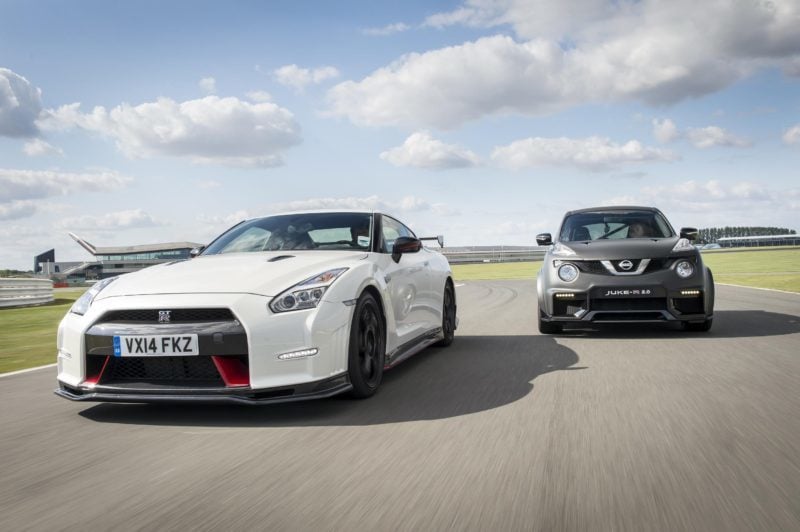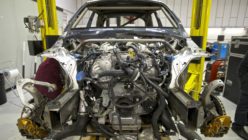Welcome to Wednesday Want. Each week, our team will pluck a car from our thousands-strong Car Suggestions forum and give it some time in the spotlight. From the weird to the wonderful, we’ll be covering the full automotive spectrum. You can check out past Wednesday Want entries right here.
People often say that volume manufacturers don’t take risks. Their cars are compromises, for reliability or day-to-day user-friendliness. They don’t ever just let loose and do something crazy.
Nissan’s Juke is an example of that. Sure, it has the crazy, over-the-top looks that still evoke an involuntary vomit response today, seven years after launch, but the substance of the car is much more ordinary.
It’s a B-segment crossover. In the Nissan-Renault alliance this means that it’s a Nissan Micra or a Renault Clio underneath. Or a Dacia Duster. It has the same, humdrum 1.5- and 1.6-liter engines. Sure, Nissan lifted it up a bit — it’s a crossover after all — but you’re not looking at a clean-sheet design without compromise. Don’t get us wrong, the Juke actually drives quite nicely, but like so many others it’s an accounting department car.
However, someone at Nissan had a bit of a spark of inspiration and set about the Juke in a most peculiar way and wrapping it round a Nissan GT-R. And that’s not just the engine, but the whole GT-R.

It’s no easy task. For a start, there’s size issues. The Juke is 20 inches shorter than the GT-R, with 10 inches less in the wheelbase. It’s five inches narrower too. The GT-R is a clever machine, but it’s incredibly complicated and it’s a great deal more difficult than simply moving the wheels in. And that’s without even mentioning the engine bay. Nissan designed the Juke’s for a four-cylinder engine and gearbox, transversely mounted. The GT-R uses a longitudinal V6.
In short, it’s an utterly ridiculous challenge, which Ray Mallock gleefully took up. His company, RML, was no stranger to bizarre Nissans, creating the mid-engined Micra 350 SR a couple of years previously. It took just 22 weeks for RML to create the first prototypes — one black left-hand drive car and one white right-hand drive — and the result was stunning.
To solve the width problem, RML simply increased the Juke’s width by five inches. The Juke-R’s front track is 2.5 inches more than on the standard car, and the rear track nearly 3.5 inches wider. Otherwise the car is physically little different. The solution for the engine bay seems to have been to ignore that a problem existed — you can barely see the front pair of cylinders with the bonnet up. Clearly no-one at RML is interested in a spark plug change…
After the 485 hp Juke-R gave some supercars a pasting in a promotional video in Dubai, orders started to flood in. By 2012, Nissan and RML were building production models on a to-order basis, with an updated 545 hp engine.
But as the GT-R itself evolved, the Juke-R had to follow. Nissan facelifted the Juke in 2014 and updates to the GT-R now meant the engine could supply up to 600hp. Sure enough, Juke-R 2.0 followed.
The team responsible for the first car went to town with the second. Extensive use of carbon-fiber in the bodywork dropped weight — the first car weighed a baffling 4,000lb — while a new design for the front bumper opened new routes to cool the monster 600 hp V6. Nissan hasn’t published any performance figures for the Juke-R 2.0, but even in a GT-R Nismo it’s unlikely you’re going to pull away before you hit 4th gear and that’s only due to the Juke’s higher drag coefficient.
We’ve not heard much about the Juke-R 2.0 since it first broke cover, but Nissan apparently intended to make 17 of them. If you can find one, it may be the rarest, and strangest, supercar you’ll ever see.
See more articles on Nissan.


























